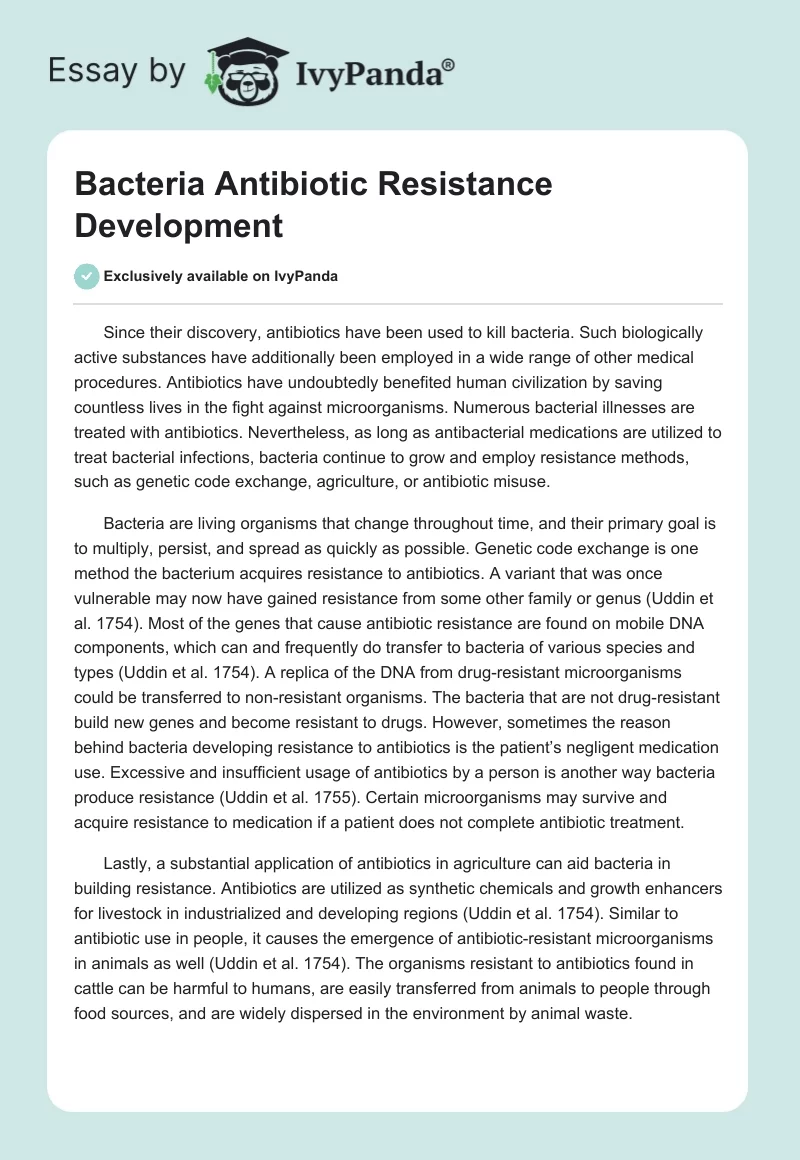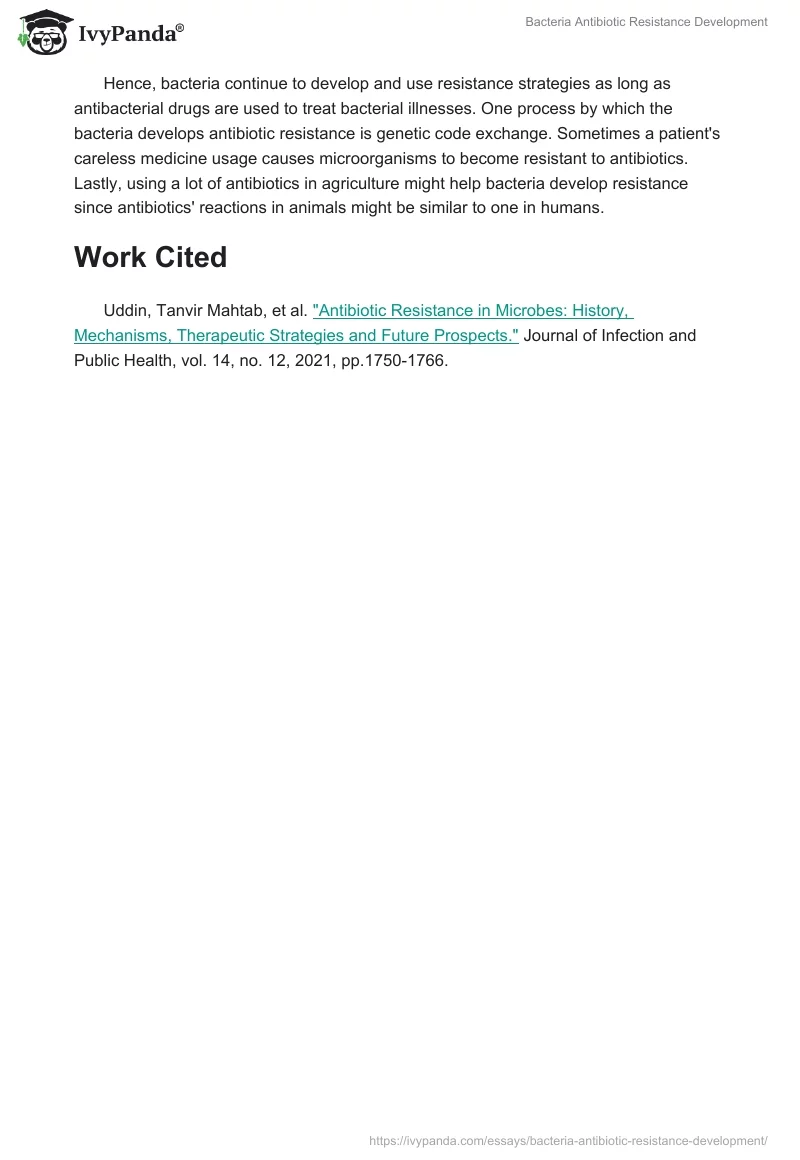Since their discovery, antibiotics have been used to kill bacteria. Such biologically active substances have additionally been employed in a wide range of other medical procedures. Antibiotics have undoubtedly benefited human civilization by saving countless lives in the fight against microorganisms. Numerous bacterial illnesses are treated with antibiotics. Nevertheless, as long as antibacterial medications are utilized to treat bacterial infections, bacteria continue to grow and employ resistance methods, such as genetic code exchange, agriculture, or antibiotic misuse.
Bacteria are living organisms that change throughout time, and their primary goal is to multiply, persist, and spread as quickly as possible. Genetic code exchange is one method the bacterium acquires resistance to antibiotics. A variant that was once vulnerable may now have gained resistance from some other family or genus (Uddin et al. 1754). Most of the genes that cause antibiotic resistance are found on mobile DNA components, which can and frequently do transfer to bacteria of various species and types (Uddin et al. 1754). A replica of the DNA from drug-resistant microorganisms could be transferred to non-resistant organisms. The bacteria that are not drug-resistant build new genes and become resistant to drugs. However, sometimes the reason behind bacteria developing resistance to antibiotics is the patient’s negligent medication use. Excessive and insufficient usage of antibiotics by a person is another way bacteria produce resistance (Uddin et al. 1755). Certain microorganisms may survive and acquire resistance to medication if a patient does not complete antibiotic treatment.
Lastly, a substantial application of antibiotics in agriculture can aid bacteria in building resistance. Antibiotics are utilized as synthetic chemicals and growth enhancers for livestock in industrialized and developing regions (Uddin et al. 1754). Similar to antibiotic use in people, it causes the emergence of antibiotic-resistant microorganisms in animals as well (Uddin et al. 1754). The organisms resistant to antibiotics found in cattle can be harmful to humans, are easily transferred from animals to people through food sources, and are widely dispersed in the environment by animal waste.
Hence, bacteria continue to develop and use resistance strategies as long as antibacterial drugs are used to treat bacterial illnesses. One process by which the bacteria develops antibiotic resistance is genetic code exchange. Sometimes a patient’s careless medicine usage causes microorganisms to become resistant to antibiotics. Lastly, using a lot of antibiotics in agriculture might help bacteria develop resistance since antibiotics’ reactions in animals might be similar to one in humans.
Work Cited
Uddin, Tanvir Mahtab, et al. “Antibiotic Resistance in Microbes: History, Mechanisms, Therapeutic Strategies and Future Prospects.” Journal of Infection and Public Health, vol. 14, no. 12, 2021, pp.1750-1766.


